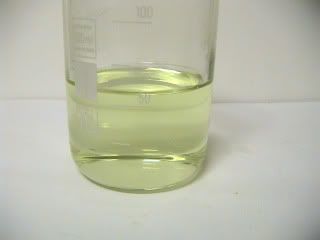
H2O2 + (2)H(+) + (2)Cl(-) ---> Cl2 + (2)H2O
H2O2 + Cl2 ---> O2 + (2)H(+) + (2)Cl(-)
and is believed to be due to the occurence of these two competing reactions at equal rates." Livingston and Bray, J. American Chem. Society, Volume 47, p2069 (1925)
In this reaction, there is mostly not any net generation of chlorine resulting from the action of dilute solutions of hydrogen peroxide on hydrogen chloride, although elemental chlorine appears to be an important intermediate. Basically, either HCl or Cl2 can slowly catalyze the decomposition of H2O2 (hydrofluoric acid does not catalyze any reaction). A small amount of the HCl is oxidized by the H2O2 when the solutions are concentrated, but the reaction is very inefficient. Most of the H2O2 is just decomposed. Interestingly, a similar reaction exists between ozone and chlorine gas. While the main reaction is almost entirely the catalyzed decomposition of ozone into oxygen gas, there are small traces of ClO2, and even Cl2O6 (which is a red liquid), which form.
When 30% concentrated HCl and 30% H2O2 is used then there develops a slight greenish yellow color and a faint but distinctive odor of chlorine, yet the gas from the bubbles is still mostly O2. I have conducted this experiment and observed only moderate steady bubbling that persisted for several hours.
It is mentioned in the literature that chlorine gas is evolved from 30% solutions of HCl and H2O2, although in more dilute solutions, only oxygen is generated.
"Oxidation of Hydrogen chloride with hydrogen peroxide in aqueous solution" V.I. Skudaev, A.B. Solomonov


